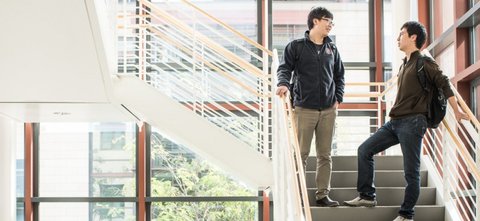Electrical Engineering
EE at Stanford has changed the world. Our innovations and entrepreneurship have helped create Silicon Valley and educated many leaders in industry and academia worldwide.
Our faculty and students continue to advance the state-of-the-art, define new directions for electrical engineering and develop new technologies. These advancements help address critical societal challenges in biology, medicine, energy and the environment.

Research in electrical engineering spans a diverse set of intellectual disciplines and applications. The disciplines can be grouped into three overlapping and interrelated areas: physical technology and science, information systems and science and hardware/software systems.
What is it like for undergraduate students?
Students who complete their BS in EE gain a basic understanding of electrical engineering built on a foundation of physical science, mathematics, computing and technology. Coursework prepares students for careers in government agencies, the corporate sector or for future study in graduate or professional schools.

What is it like for graduate students?
The master’s degree program in electrical engineering provides advanced preparation for professional practice through a highly customizable, coursework-based curriculum. We offer a broad and innovative set of research programs, supported by state-of-the-art research equipment and a large set of diverse classes, to help our students interact and build friendships with an impressive set of students, faculty and staff from around the world.


